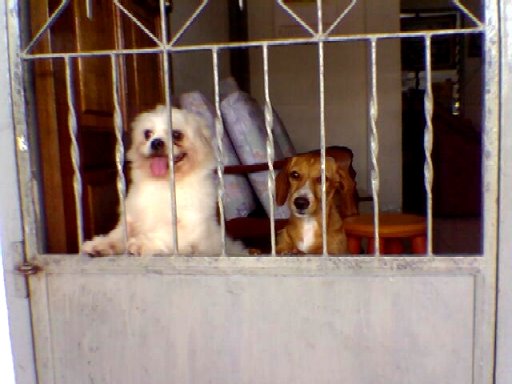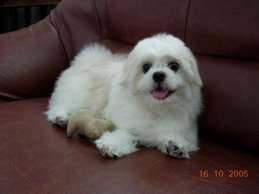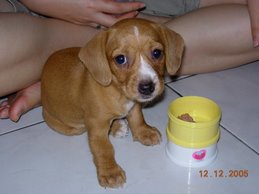Article From SubmitYOURArticle.com: Scottish Terrier Dog
The Scottish Terrier, most commonly known as the
Scottie, although sometimes it is called the
Aberdeen Terrier, is a short and sturdy dog. With
a height of 9 to 11 inches and weighing between
18 and 23 pounds, they are obviously fairly
muscular for their size. Because these dogs have
naturally long hair, the grooming can make it
look as though they have even shorter legs than
they actually do. The hair on their face can grow
quite long and when groomed looks almost as
though they have a large moustache, somewhat
typical of the stereotyped 'what ho Biffo' World
War II pilot (so often seen in comedy sketches),
and their long eyebrows only exaggerate this
perception. They have a coarse and compact coat
which is quite wiry and firm, and can feel like
hard bristles.
History. The Scottish Terrier was, as you may
expect, first bred in Scotland, in the 1700s.
Originally named Aberdeen Terrier, after the
Scottish city, this is a particularly old breed,
and parts of its history are steeped in myth and
legend, as there is little to no supporting
documentary evidence, although, a breed of dog
whose description matched the Scottish Terrier
was written about in 1436.
Temperament. The Scottish Terrier breed is
generally lovable, hardy, and brave. Being full
of character and playful, they mature into
dignified and charming adults. They make good
watchdogs and will alert you to any problems they
perceive. They train quite well, but can be
stubborn and have been known to dig their heels
in. They tend to be sensitive to criticism, and
need to be handled in a gentle but firm fashion.
As an intelligent dog they require to know who
the master is, they must not be allowed to think
they are in charge or this could lead to endless
problems in later life. When training or handling
this dog any command given must be in a manner
that shows you mean it, and you must mean it or
the dog will know, and may just ignore you.
Whilst this is a very playful dog and loves
nothing more than to dash about; care must be
taken not to play particularly aggressive or
combative games, such as challenging the dog to
rope tugging. However such games can be played
with members of the family who are not his
master, this is because the dog may see the
contest as a leadership challenge, if conducted
by the person he sees as the pack leader.
Health issues. The Scottish Terrier can suffer
from a fairly unique illness called Scottie Cramp
(which is a problem in movements). Also are prone
to Von Willebrand's disease, jaw problems, skin
conditions, and flea allergies. Their life
expectancy is 12 to 15 years.
Grooming. The Scottish Terrier will require
brushing regularly, of their wiry coat, during
moulting more care should be taken and brushing
to be more frequent. Bathing can be conducted as
necessary or dry shampooing. Their hair will
require being trimed professionally twice a year.
Apart from when they are moulting they tend to
shed little hair, if any at all.
Living conditions. While the Scottish Terrier
prefers cooler climates, it is very happy living
in most homes. They are entertaining and get on
very well with children, and as they are fairly
small, they are unlikely to knock people over. As
long as they are adequately exercised they will
take well to living in an apartment.
----------------------------------------------------
For more information on the Scottish Terrier Dog
Breed, Dog Training methods and Teacup Puppies
for sale including Yorkies, Chihuahuas and
Morkies Please visit my website below.
http://www.scottspuppypalace.com/scottish-terrier.
htm
EasyPublish this article: http://submityourarticle.com/articles/easypublish.php?art_id=94886














.jpg)






.jpg)

0 comments:
Post a Comment